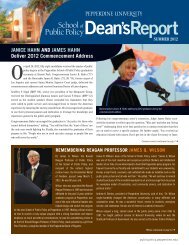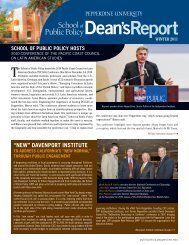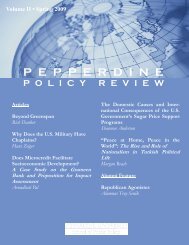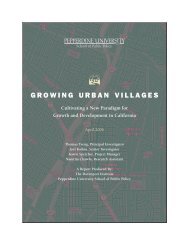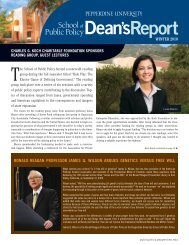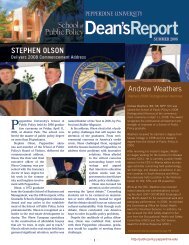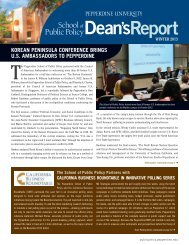Finding Permanent Homes for Adoptable Children - Pepperdine ...
Finding Permanent Homes for Adoptable Children - Pepperdine ...
Finding Permanent Homes for Adoptable Children - Pepperdine ...
You also want an ePaper? Increase the reach of your titles
YUMPU automatically turns print PDFs into web optimized ePapers that Google loves.
These agreements may be entered into when an agency cannot provide a particular service or when an<br />
agency simply lacks the capacity to meet service demand.<br />
Agencies may also choose to provide some services and contract others. For states without well-<br />
established purchase of service agreements, prospective adoptive parents may choose to hire a private,<br />
licensed adoption agency to complete the home study. Prospective adoptive parents may pay between<br />
$700 and $1,700 <strong>for</strong> a home study, according to the Adoption Guide published by the Adoptive Families<br />
Magazine in New York. One couple revealed that after spending thousands of dollars to have a home<br />
study completed by a private agency in Minnesota, they then refused to release the report results to<br />
another state without an additional $10,000 fee. 18 If the family adopts the child under the provisions of<br />
the Small Business Job Protection Act of 1996, they can recover the fee <strong>for</strong> the home study. The Act<br />
provided a $5,000 tax credit <strong>for</strong> families who adopt and a $6,000 tax credit <strong>for</strong> families who adopt a child<br />
with special needs. However, <strong>for</strong> families with incomes exceeding $75,000 annually, the tax credit<br />
begins to phase out. In addition, there are problems regarding the acceptance of home studies between<br />
states managing interstate adoptions. Since requirements in home studies vary between states, the<br />
in<strong>for</strong>mation gathered in the receiving state may be insufficient in meeting the requirements of the sending<br />
state. Currently, the American Public Human Services Association (APHSA) established the<br />
“Geographic Barriers Task Force of APHSA to Identify Barriers to Placements across State Lines” to<br />
include state agency representatives in developing a model home study protocol. 19<br />
As it stands now, the language of the ICPC does not provide <strong>for</strong> the opportunity to use any of the above-<br />
mentioned strategies nor does it set even minimal standards <strong>for</strong> home study requirements. While some<br />
states have been improvising in order to better alleviate the home study conundrum, there are no official<br />
homestudy guidelines within the ICPC.<br />
Another factor contributing to the confusion is the lack of direction provided in the language of the<br />
compact itself. Although Article I is explicit regarding the objectives of interstate adoption approval,<br />
assuring that children “receive the maximum opportunity to be placed in a suitable environment and with<br />
persons or institutions having appropriate qualifications and facilities to provide a necessary and desirable<br />
18 Wetzstein, Cheryl. “A Special Report. State Line Stall Interstate Adoptions: Prospective Parents are Stymied Despite Law to<br />
Ease Process.”The Washington Times. September 2, 2001. http://www.adoptionnation.com/wash_times_9-2-01.htm. Google<br />
search engine. Accessed February 6, 2003.<br />
19 The U.S. Department of Health and Human Services. “IV. Overcoming Barriers to Interstate Adoptions.” January 1, 2001.<br />
http://www.acf.dhhs.gov/programs/cb/initiatives/photolts/sect4.htm. Google search engine. Accessed February 6, 2003.<br />
10



